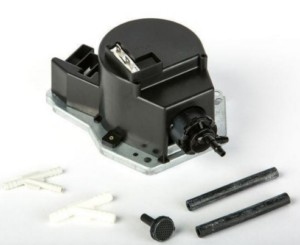A camshaft position sensor is vital for your engine’s performance. It tells your car’s computer the position of the camshaft, enabling precise control over fuel injection and ignition timing. A failing sensor can lead to significant drivability issues. This guide provides a step-by-step walkthrough on how to change a camshaft position sensor yourself.
What is a Camshaft Position Sensor and What Does It Do?
The camshaft position sensor is a small electronic device that monitors the rotational position of the camshaft. This information is relayed to the engine control unit (ECU), which uses it to determine the precise timing for fuel injection and spark ignition. Without accurate readings from this sensor, your engine’s performance will suffer. The sensor often utilizes the Hall effect, generating a voltage signal that changes based on the proximity of a reluctor ring on the camshaft. It’s typically located in the cylinder head, timing cover, or on the engine block.
Symptoms of a Bad Camshaft Position Sensor
A malfunctioning camshaft position sensor can manifest in various ways, impacting your vehicle’s performance and drivability. Recognizing these symptoms is crucial for early diagnosis and preventing further engine problems. Common signs include:
- Engine Misfires: The engine may stumble or hesitate during acceleration due to incorrect ignition timing.
- Rough Idling: The engine may run unevenly or vibrate excessively at idle.
- Poor Fuel Economy: A decrease in fuel efficiency can result from improper fuel injection timing.
- Check Engine Light: The illumination of the check engine light, often accompanied by a diagnostic trouble code (DTC) such as P0340, indicates a potential camshaft position sensor issue.
- Reduced Power: You might experience a noticeable lack of power or acceleration.
- Starting Problems: In severe cases, a faulty sensor can prevent the engine from starting altogether.
Causes of Camshaft Position Sensor Failure
Several factors can contribute to the failure of a camshaft position sensor. Understanding these causes can help you prevent future issues:
- Heat Damage: Excessive heat from the engine can damage the sensor’s internal components.
- Oil Contamination: Leaks or spills can contaminate the sensor, affecting its ability to function correctly.
- Wiring Issues: Damaged or corroded wiring can disrupt the signal transmission between the sensor and the ECU.
- Mechanical Wear: Over time, the sensor itself can wear out, leading to inaccurate readings.
- Vibration and Impacts: Exposure to excessive vibration or impacts can damage the sensor.
How to Replace a Camshaft Position Sensor: A Step-by-Step Guide
Replacing a camshaft position sensor is often a straightforward process that can be done with basic tools. Here’s a detailed guide:
1. Disconnect the Negative Battery Terminal
Before starting any electrical work, disconnect the negative battery cable to prevent accidental shorts.
2. Locate the Camshaft Position Sensor
Consult your vehicle’s repair manual to pinpoint the exact location of the sensor. It’s usually found near the top of the engine, on the cylinder head, timing cover, or engine block.
3. Disconnect the Electrical Connector
Carefully detach the electrical connector from the sensor. There may be a retaining clip or bolt that needs to be removed first.
4. Remove the Sensor
Using the appropriate tool (usually a socket or wrench), remove the bolts securing the sensor to the engine.
5. Install the New Sensor
Apply a small amount of clean engine oil to the O-ring of the new sensor. Install the new sensor in the reverse order of removal, ensuring it’s properly seated and secured with the bolts.
6. Reconnect the Electrical Connector
Reattach the electrical connector to the new sensor, making sure it’s firmly connected.
7. Reconnect the Battery and Clear Codes
Reconnect the negative battery terminal. Use a code reader or scanner to clear any stored diagnostic trouble codes related to the camshaft position sensor.
8. Test Drive
Start the engine and take a short test drive to verify that the new sensor is working correctly and the issue has been resolved.
Camshaft Position Sensor Replacement Cost
The cost of a replacement camshaft position sensor varies depending on the vehicle make and model. Typically, the part itself costs between $20 and $150. If you choose to have a professional mechanic perform the replacement, expect to pay an additional amount for labor.
By following this guide, you can successfully change your camshaft position sensor and restore your engine’s performance. Remember to consult your vehicle’s repair manual for specific instructions and torque specifications. While this is often a DIY-friendly task, if you’re uncomfortable working on your car, it’s always best to consult a qualified mechanic.

